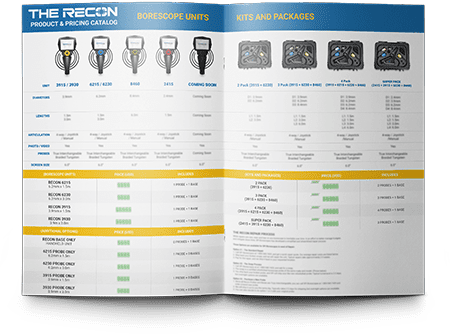spections remain a crucial part of aircraft maintenance and proficiency in inspections ensure the airworthiness of the aircraft. According to the Federal Aviation Administration (FAA), a visual inspection is a process of using the eye, alone or in conjunction with various aids, as the sensing mechanism from which judgments may be made about the condition of the unit to be inspected. Visual inspections are used to assess the overall condition of a structure, component, or system.
For aircraft, inspections provide early detection of defects, manufacturing errors, or fatigue. The also help aircraft maintenance teams obtain information about the condition of a defective component or unit. The FAA divides visual inspections into four different categories according to their degree of effectiveness and difficulty: (1) walkaround inspections, (2) general visual inspection, (3) detailed visual inspection, and (4) special detailed visual inspection.

The Visual Airframe Inspection Process
There are varying types of aircraft with different airframes, make-up, modification as well as the environment in which they operate. Because of this, inspections are conducted by qualified and trained inspectors who are familiar with the equipment. Inspections take time and in some cases, downtime is inevitable. However, with today’s technology, visual aircraft, and airframe inspection can be completed, saved and documented using video and photo imaging systems, borescope attachments and camera insertion tubes.
When it comes to aircraft, a series of inspection occur at different times. This helps to identify any potential defects before they become problematic. According to the FAA, visual inspections should need two fundamental elements to be successful: (1) a trained inspector with binocular vision and good visual acuity; (2) an inspection procedure which defines the details of the inspection, including examples of the defect(s) tracked. The following are all the components that should be frequently inspected:
Visual detection of surface cracks and hidden defects Hardware and fasteners Control systems Visual inspections for corrosion and disbands Painted surfaces Windshields and ports Engine
Equipment Used In Visual Inspection
- Inspection Mirrors For areas that are in the normal line of sight, inspection mirrors can be used alongside a flashlight for visual inspection. These are most commonly used for inspecting the surface or external airframe. Inspection mirrors come in a variety of styles from the spring-loaded and long-reach extension mirrors, to adjustable angle and telescoping mirrors. The kind of mirror depends on the application and some have additional features like optical lights, magnets, and insulation.
- Simple Magnifiers A simple magnifier is the simplest form of a microscope and range in size and magnification. Simple magnifiers come in different designs like folding case magnifiers, pocket magnifiers, round and rectangular magnifiers, and attached case magnifiers. Magnifiers are often used in conjunction with flashlights for visual inspections.
- Video Microscope Imaging System When it comes to inspections, documentation is necessary and mandated by the FAA. Inspection equipment that allows for photos and video are useful in training, documenting services, maintenance, and repair. An image or video allows inspectors to share opinions, decisions, and knowledge of visual inspections. Both photo and video systems, are available to attach to borescopes, microscopes, and fiberscopes.
- Borescopes Borescopes are used for aircraft maintenance and inspection because they reduce the likelihood of deconstruction. Deconstructing an aircraft is a process that can be time-consuming and costly. Aircraft turbine engines have access ports specifically designed for borescopes.Because of their design, borescopes allow you to conduct a remote visual inspection of internal surfaces and inaccessible areas. Borescopes have many uses in the field of aviation maintenance and repair and, typically, they come in two types: rigid and flexible. Flexible and rigid borescopes also vary and the need for each would be influenced by the type of equipment, resolution, video/photo capabilities and environment.
Borescopes are typically used for inspecting:
- Interiors of hydraulic cylinders
- Turbojet engine turbines
- Blades
- Combustion can
- Seals, bonds, and gaskets
- Difficult-to-reach areas of aircrafts
Typical Airframe Defects
- Cracks The older equipment becomes, the more likely it is to become defective. A visual inspection can help identify any cracks in the frame that may have been created by fatigue or wear and tear. There are different reason and areas for crack but some of the most susceptible to cracks are the engine attach points, skin doublers and pressure bulkheads, fuel tanks, landing gear wheel rims, and wing spars and caps.
- Corrosion Corrosion is the result of moisture and oxidation and can affect many parts of an aircraft. Some of the most susceptible areas include the battery and lavatory areas, undercarriage bays Corrosion can lead to chipped, loose or blistered paint, missing rivet heads, chips, and cracks. A visual airframe inspection will help identify any early signs of corrosion before they become damaging to the frame.
- Disbonding In some cases, disbonding can be identified visually. However, it can be difficult because disbonding normally occurs internally as opposed to on the surface. When a bonded surface becomes disbonded, corrosion is likely to occur. The areas most susceptible to disbonding include the composite surfaces, skin doublers, doublers around doors, and the wing spar assemblies.
- Engine Defects A visual airframe inspection will identify any defect or malfunction in the engine that can damage the unit, increase downtime and cut profits. These kinds of inspections should be done frequently and in depth. Some common physical engine defects include chipping, scoring, fracture, pile-up, erosion, and flaking. A full inspection of the engine would require it to be removed from the unit. While there are alternatives, deconstruction can’t be completely avoided for this particular component.
Inspection remains a crucial aspect of aircraft maintenance and should not be neglected. According to the FAA, over 80% of the inspections on large transport category aircraft are visual inspections. That number is even greater for small transport aircraft and general aviation aircraft. Visual inspections can help decrease deconstruction and downtime and tend to be the most economical and efficient way to obtain an early assessment of the aircraft’s conditions. Properly conducting a full inspection ensures the safety of the equipment and its products or passengers.


